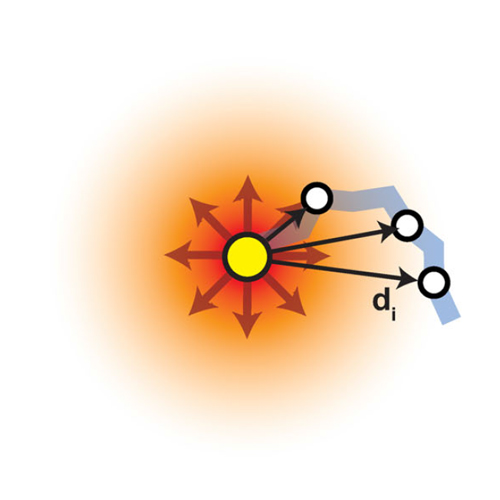Following the energy transfer in and out of a polyproline–peptide
19-Jan-2013
Peptide Science, 2013, DOI: 10.1002/bip.22171, Volume 100, Issue 1, pages 38–50 published on 19.01.2013
Peptide science, online article
The intramolecular and intermolecular vibrational energy flow in a polyproline peptide with a total number of nine amino acids in the solvent dimethyl sulfoxide is investigated using time-resolved infrared (IR) spectroscopy. Azobenzene covalently bound to a proline sequence containing nitrophenylalanine as a local sensor for vibrational excess energy serves as a heat source. Information on through-space distances in the polyproline peptides is obtained by independent Fo¨rster resonance energy transfer measurements. Photoexcitation of the azobenzene and subsequent internal conversion yield strong vibrational excitation of the molecule acting as a local heat source. The relaxation of excess heat, its transfer along the peptide and to the solvent is monitored by the response of the nitro-group in nitrophenylalanine acting as internal thermometer. After optical excitation, vibrational excess energy is observed via changes in the IR absorption spectra of the peptide. The nitrophenylalanine bands reveal that the vibrational excess energy flows in the peptide over distances of more than 20 A ° and arrives delayed by up to 7 ps at the outer positions of the peptide. The vibrational excess energy is transferred to the surrounding solvent on a time scale of 10–20 ps. The experimental observations are analyzed by different heat conduction models. Isotropic heat conduction in three dimensions away from the azobenzene heat source is not able to describe the observations. One-dimensional heat dissipation along the polyproline peptide combined with a slower transversal heat transfer to the solvent surrounding well reproduces the observations.











